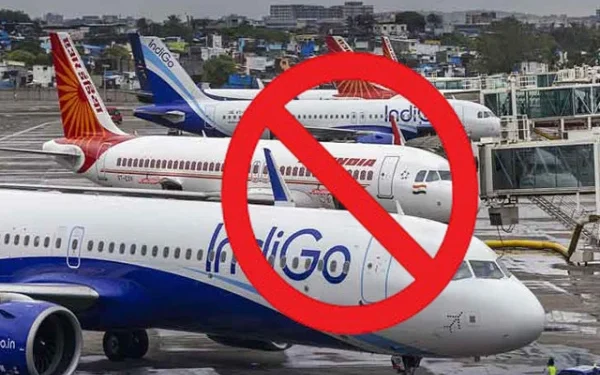Karachi — The Government of Pakistan is expected to extend the closure of its airspace for Indian aircraft for another month, with the issuance of a fresh NOTAM (Notice to Airmen) scheduled for today. This move comes amid ongoing diplomatic and military tensions between Pakistan and India and is aimed at safeguarding national security.
The extension will mark the second phase of the airspace restriction initially implemented on April 24, 2025, and later extended on May 23, 2025. The current NOTAM is set to expire today, and aviation authorities are preparing to release a new advisory to officially extend the ban until late July 2025.
Background of the Airspace Closure
Pakistan’s decision to restrict its airspace to Indian aircraft was first implemented in late April 2025, following heightened political and military tensions along the Line of Control (LoC) and in the wider South Asian region. The move was a direct response to alleged violations and provocations by Indian forces, as well as increased Indian aerial surveillance activity near Pakistani airspace.
The closure specifically targets Indian aircraft, both civilian and state-owned, preventing them from flying over or entering Pakistani airspace. However, the ban does not affect international commercial carriers from other countries, which continue to use Pakistan’s airspace freely under routine regulations.
How NOTAMs Regulate Airspace
A NOTAM (Notice to Airmen) is a critical aviation document that provides essential flight operation information to pilots, air traffic controllers, and airline operators. In this case, the Pakistan Civil Aviation Authority (PCAA) will issue a NOTAM detailing the areas of restricted airspace, the effective period of the ban, and the categories of aircraft affected.
The NOTAM will once again clarify that Indian commercial and military aircraft are prohibited from entering designated Pakistani flight routes, as part of ongoing diplomatic measures. This regulatory step is aligned with international aviation protocols governed by the International Civil Aviation Organization (ICAO).
Impact on Indian Airlines and Regional Flight Routes
The extension of the ban will further complicate flight operations for Indian airlines, particularly those operating long-haul routes to the Middle East, Europe, and Africa. These carriers often rely on Pakistani air corridors for shorter and more fuel-efficient flight paths.
Due to the restriction, Indian airlines are forced to take longer alternative routes, usually through Iranian, Afghan, or Central Asian airspace, adding extra flight time, increased fuel costs, and operational delays.
According to aviation experts, the rerouting could lead to a 5-15% increase in operating costs for Indian carriers on select international routes, potentially leading to higher ticket prices and delayed schedules for passengers.
Security and Geopolitical Context
This airspace closure comes against the backdrop of increased military tensions between Islamabad and New Delhi. Diplomatic channels have remained largely frozen, and cross-border skirmishes have reportedly intensified in recent weeks. Intelligence sources in both countries have indicated that border surveillance, military drills, and rhetoric have all contributed to the current climate of mistrust.
Pakistan has emphasized that the airspace closure is purely a defensive measure aimed at protecting its territorial sovereignty. The Ministry of Foreign Affairs has stated that the decision was made after “careful consideration of national security risks posed by hostile air activity from across the border.”
Historical Precedents of Airspace Closures
This is not the first time Pakistan has closed its airspace to Indian flights. A similar measure was taken after the Pulwama attack in February 2019, which led to military engagements between the two countries, including airstrikes and the shooting down of aircraft. In that instance, the closure lasted for several months, significantly affecting air travel across the region.
The current situation mirrors those past events in tone and timing, though it is unclear how long the closure will persist this time. Analysts warn that continued escalation without diplomatic engagement could lead to prolonged disruptions in civil aviation and economic losses on both sides.
International Reaction and Aviation Implications
The international community, particularly countries with strong economic and strategic interests in South Asia, is monitoring the situation closely. Global aviation bodies, including the ICAO, have so far not intervened but have called for both nations to resolve their disputes through dialogue and peaceful negotiation.
Major international airlines such as Emirates, Qatar Airways, Turkish Airlines, and British Airways continue to operate flights through Pakistan’s airspace without restriction, though all remain alert to any sudden changes in flight advisories or regional conflict developments.
Airline regulators in Europe, the Middle East, and North America are also issuing updated travel guidelines to ensure passenger safety and adherence to altered flight paths where necessary.
Economic and Strategic Repercussions
For Pakistan, the decision to extend the airspace ban for Indian aircraft also comes at an economic cost, although not as severe as for Indian carriers. Airspace overflights typically generate navigation fee revenues for the host country, which are reduced when specific carriers are barred.
However, Pakistani officials argue that national security takes precedence over economic considerations. The ban is seen as part of a larger strategic approach to send a message to India that hostile behavior will come with consequences—even in peaceful domains such as civil aviation.
Strategic analysts believe the move is also intended to pressure India diplomatically and economically by isolating it in air transit corridors, potentially encouraging foreign stakeholders to mediate for de-escalation.
Looking Ahead: Possibility of De-escalation or Prolonged Tensions
While the extension is expected to last for one month, observers warn that this could become a long-term diplomatic tool if relations between India and Pakistan continue to deteriorate. In the absence of formal talks or third-party mediation, aviation restrictions may become the new norm during geopolitical standoffs between the two nuclear-armed neighbors.
There is, however, cautious optimism among some diplomatic circles that backchannel talks—possibly facilitated by neutral parties such as Turkey, Qatar, or the UAE—could reopen avenues for de-escalation.
Until then, Pakistan is likely to maintain its airspace closure policy as a part of its broader national defense doctrine and regional diplomacy strategy.
Conclusion
The expected extension of Pakistan’s airspace ban for Indian aircraft highlights the fragile state of India-Pakistan relations and the broader implications of regional conflicts on civil aviation. As diplomatic tension remains high, the move signals Pakistan’s intent to uphold its sovereign rights while encouraging responsible behavior from its eastern neighbor.
Travelers, airlines, and policy-makers alike will now watch closely to see how this situation evolves in the coming weeks—and whether a path to diplomatic resolution can emerge before the current ban lapses again.

























